How to Hide a Projector: In a Ceiling, behind a Wall, Table
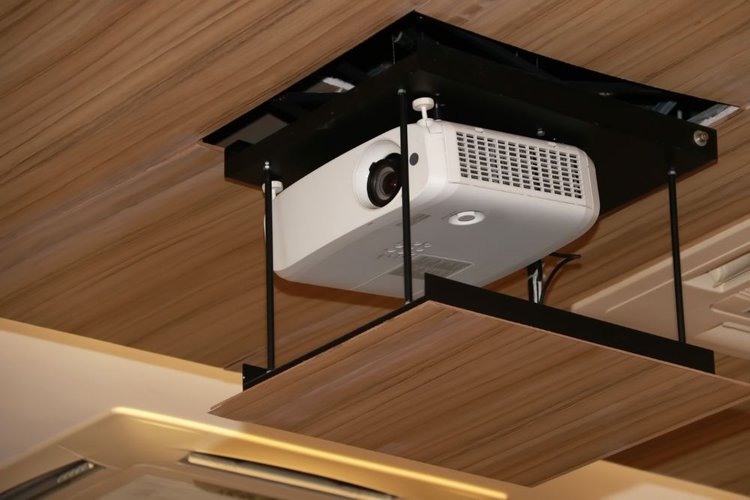
What To Know
- To hide a ceiling-mounted projector, options include creating a custom-made soffit, using a three-sided cover, or implementing a motorized lift system for an elegant solution—each with considerations for ventilation and projector size.
- Mounting a projector to the ceiling can offer a professional look and space-saving benefits, but it requires effort, tools, or professional help.
We’ll explore practical solutions for concealing your projector, whether it’s mounted or needs a discreet storage spot post-use.
Dive into the various strategies to hide your projector effortlessly, and find the perfect fit for your home’s design and your lifestyle.
Let’s unveil the secrets to a clutter-free entertainment setup.
Quick Navigation
5 Ways to Hide a Ceiling-Mounted Projector
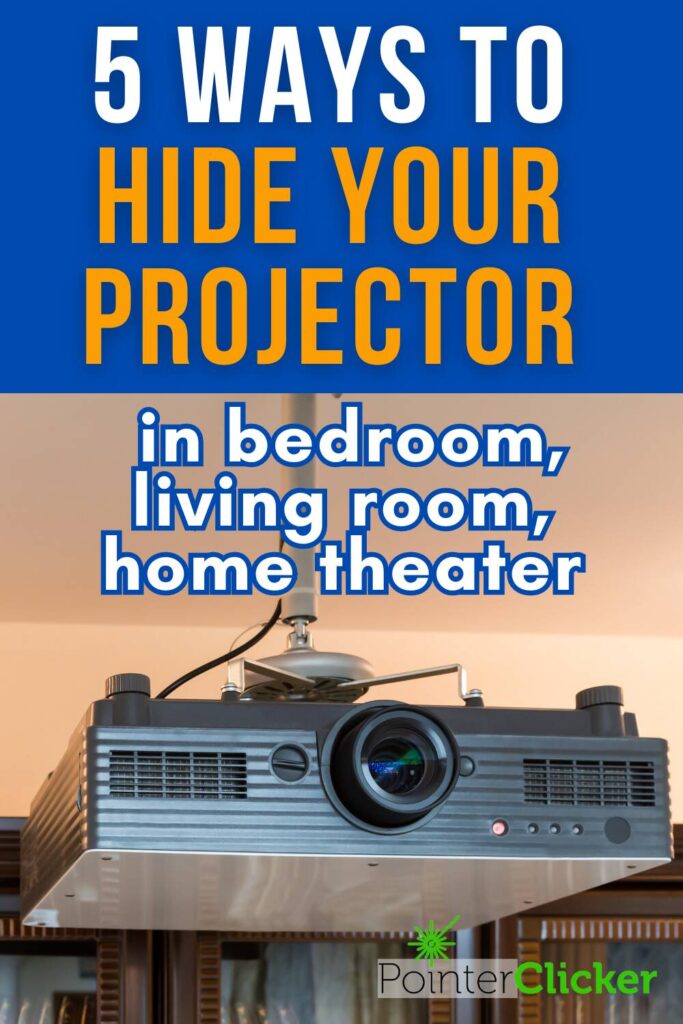
If you’ve considered your projector placement options and mounting the device to the ceiling grabs your fancy or suits your needs the best, you may want to hide the projector.
Generally, projectors attached to the ceiling do not get hidden out of sight as standard. Concealing a ceiling-affixed projector is an optional design convenience you must opt for and spend time and money on additionally.
A projector stuck to the ceiling can be hidden in different ways. Here are the various techniques:
A Custom-Made Soffit
Soffits are used to cover the displeasing features of a house while adding some decorative architectural elements to the space simultaneously. A soffit is essentially a box (typically wooden).
Since a soffit can be used to hide pipes, wires, ducting, etc., it has no standard design. In other words, custom-design your projector soffit.
Here is a fairly old but still relevant video that teaches how to make a soffit from scratch:
For the right aesthetics, ensure the box conforms to the room’s design language.
In other words, if your space has a “woody” vibe, ensure the box is wood too and the same kind. Even more important is to get the color right since you’d want the box to blend well with the ceiling.
When done right, soffits look great. But make sure you address two potential concerns with the design.
A projector runs hot. And if it sits inside the soffit during use, heat management will become an even bigger problem since a soffit covers the projector from the back, sides, and bottom.
Placing cooling fans, therefore, becomes mandatory.
Also, the soffit would need a trap door to access the projector for servicing or cleaning efficiently.
A Three-Pronged Approach
Another option is to cover the installed projector on three sides and open the front and bottom. The design may not convincingly hide the projector.
On the upside, however, you won’t need cooling fans to keep the projector cool.
Even if the air vents are rear-mounted, the bottom opening of the cover will render air circulation a lot more efficient.
Just make sure there’s enough space between the projector and the rear wall for the hot air to bounce off and move out through the bottom.
And due to the increased room to spare, the box will easily accommodate a larger projector whenever you make the upgrade.
Tuck It into the Ceiling
If you do not like the idea of an inactive projector being always in sight (albeit enclosed in a box), hiding the device into the ceiling is the only option.
The setup also works like a charm for people who are more technologically inclined or fancy a projector hiding spot with an “electronic” twist – something that works like motorized projector screens.
The setup would consist of a pedestal, a motorized mechanism, electrical power, and a hiding spot. Electrical power is needed to drive the lift’s motor.
Here is a video showing how it’s done and the tools needed:
Though extremely elegant and clandestine when set up well, the implementation is both pricey and labor-intensive. And that’s whether you opt for a ready-to-use motorized lift or build one yourself.
And because the projector is inside the ceiling entirely when the platform ascends, the roof must have enough room to accommodate the projector housing. As stated earlier, that’s where an attic comes into play. The actual amount of space needed would vary with your projector size.
Not to mention, proper ventilation and cooling systems should be in order too.
Hiding a Projector Not Attached to the Ceiling
As mentioned above, the need to hide a projector not affixed to anything doesn’t arise since you can always grab the device and hide it in place after use.
But if you’d like to not attach your projector to the ceiling (for any of the reasons mentioned earlier) and still want to conceal the device, look at these workarounds.
Projector Cabinet
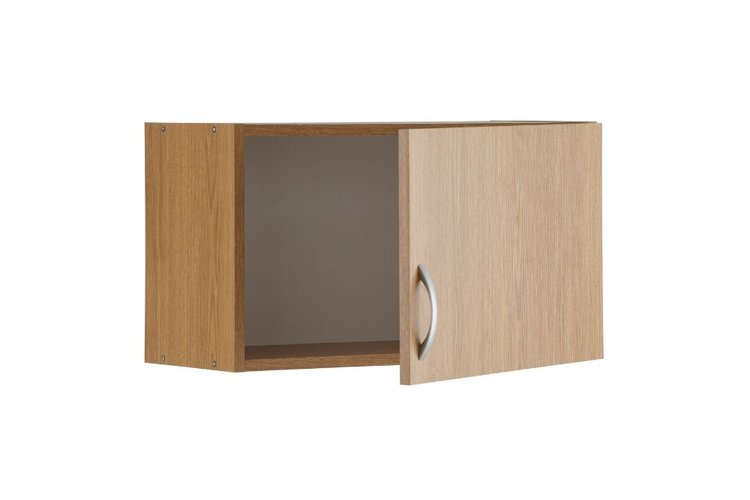
For the projector to stay relatively hidden but also accessible or not affixed to the ceiling, place it in a cabinet. The cabinet can stand against the wall or be attached to it.
The cabinet won’t be discreet or magically hide into the wall. But because cabinets don’t look out of place in any room, it won’t be the eye-sore a projector that’s out in the open usually is.
Before attaching the cabinet to the wall, ensure you’ve got the location, distance, and angles right since changing things after that or at a whim would entail some significant amount of time and work.
A projector cabinet isn’t a standard piece of equipment, and getting one premade may be difficult.
You may use a general-purpose cabinet and turn it into the housing for the projector or make one from scratch. Hire a carpenter or do it yourself.
Here is a video you need to look at for the build:
The Movie Theater Approach
If there’s space behind the room’s back wall, such as unused space, place your projector there. The arrangement is similar to how things work in the theaters. The whole unit gets hidden, except for the lens.
The hole can be carved out as per the projector lens’s size or the device’s positioning inside so that the lens can shine through.
If the wall is relatively thin, a circular opening commensurate to the size of the lens would be good enough.
If the projector is set in deeper, cut out a larger hole to ensure the rays do not ricochet off the hole’s inner walls and sabotage the visual output.
How Can I Hide My Projector in My Bedroom?
All of the methods mentioned above to hide a projector will work in your bedroom. Choosing one of the techniques boils down to how ample the space is and your preferences.
Hiding the projector behind the back wall is the best technique, provided there’s space behind the wall.
Hanging a project from your ceiling is not recommended as you don’t want to see the projector or its housing when lying on the bed. Not to mention, an affixed projector will not look good in any bedroom, even if it’s well-concealed.
Another thing, projectors aren’t commonly used in bedrooms. A 55-inch TV is typically used. Why exactly 55-inch? Because it’s not too small and not very big.
So, if you can, get a TV and use a projector in the living room and/or your man cave or she-shed.
How Do You Hide a Short Throw Projector?
A short-throw projector is a projector usually positioned three to eight feet away from the screen.
Some of the “ultra” short-throw projectors have an even shorter distance between them and their screens – typically not more than four feet.
The extremely short distance enables placing the projector between you (the viewer) and the screen – on a stand or even directly on the floor.
In other words, the projector’s ability to cast visuals only a few feet away from the screen renders it superfluous to fix it to the ceiling. And that also means you need not spend much time deciphering how to hide the projector.
But if you choose to install the projector on your ceiling, any of the above methods would work.
How Do You Hide the Power Cord on a Projector?
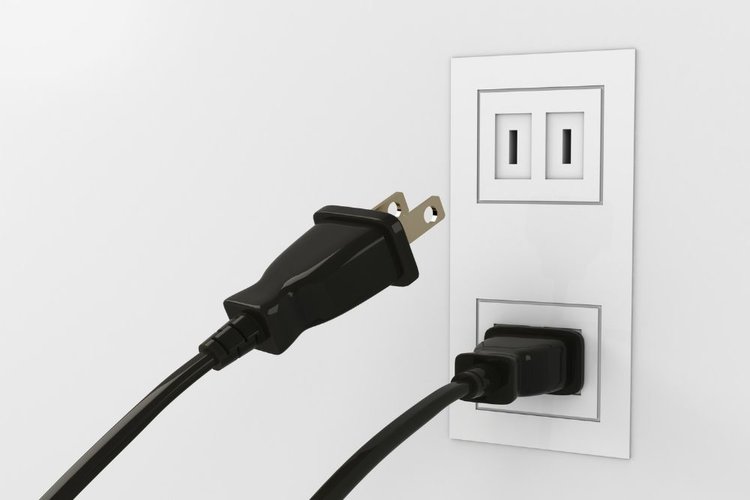
Hiding the projector cord is not as tricky is as hiding the projector. If you have any experiencing concealing cables in your desktop computer setup, you’ll be at even more ease.
There are different ways to hide projector cord, such as:
- Masking the wire with cord cover.
- Tucking in the cord behind crown molding.
- Running the cables through the wall or ceiling.
- Using your furniture, shades, etc., as cover.
Click on the link above to learn in greater detail how those various methods can be employed.
Where Should I Place My Projector?
A projector can be affixed to a ceiling, placed on a stand, or positioned in a wall (temporarily or permanently).
Placing the projector on a stand or wall shelf and using it from there is pretty easy compared to hooking up the device to your ceiling.
This begs the following question.
Should You Attach a Projector to the Ceiling?
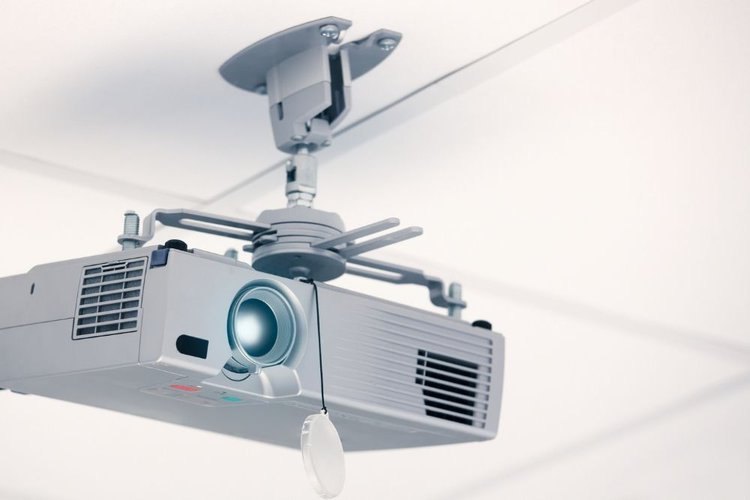
Permanently sticking the projector to the ceiling is an endeavor. It takes effort, time, commitment, and money to buy the right tools (if you don’t have them already) or hire a professional (if you aren’t handy with tools).
But if you can overlook the work involved, there are some solid benefits to affixing a projector to a ceiling, which are:
- A professional appearance for your home theater or entertainment room.
- Space savings since you won’t need a table/stand or wall space.
- You can position the projector nearer to the screen.
- Shadow casting or someone passing before the projector and causing the visuals to go blank for a split second would be a non-issue.
- Ventilation won’t be a concern as there’ll be proper airflow from all sides.
Projector manufacturers also consider mounting a projector natural. They, therefore, usually provide mounting plates in their product package itself.
And since mounted projectors go upside down, the device’s menu selection affords the option to invert the image properly. That’s another tacit sign manufacturers believe it’s normal to mount projectors.
When to Not Mount a Projector?
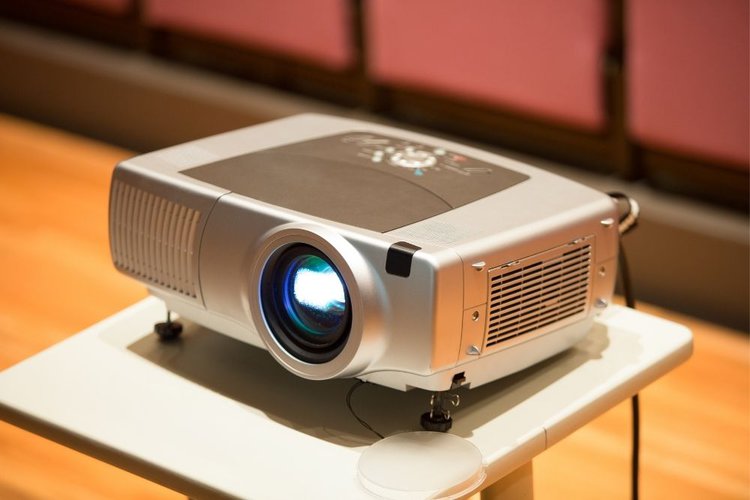
Based on your projector usage patterns and the physical space, mounting a projector may or may not be necessary.
If you use your projector occasionally for movies or sports, placing the projector on a flat surface such as a table makes more sense. In other words, don’t mount a projector if a home theater setup is not what you’re going for.
Some people attach their projectors to their ceilings because they don’t want kids in the house to have easy access to the device. If you have no children in the house, that’s another reason why you need not mount the projector.
If you don’t have the skills to mount a projector or cannot/do not want to hire a professional for the job, placing the projector on a table saves both hassle and money.
One more valid reason some people don’t opt to mount their projector is the potential rebuilding or remodeling needed. And if there is no attic above the ceiling, do not attempt to mount a projector and completely hide it there.
An attic is a space lying between a room’s ceiling joists and the roof. If your room has no such “roof void”, you cannot theoretically mount a projector and hide it in the ceiling.
If pushing the projector up into the ceiling is not the plan, and you are just looking to camouflage the device, go ahead.
Not to mention, a low-lying or false ceiling or ceiling that’s structurally not strong to hold on to a hanging projector are purely non-starters. A projector can weigh anywhere between 5 and 10 pounds (2.3 to 4.5kg) on average, requiring a relatively tough ceiling to hold on to.
And if your projector is larger and much heavier, the need for a well-built, fortress-like ceiling only becomes even more critical.
Other Things Determining Projector Placement
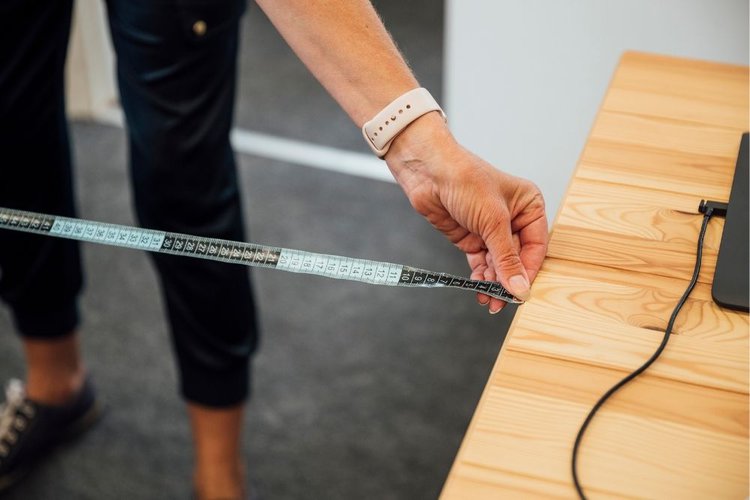
How big you want the image or the distance between the projector and the screen also ascertains projector placement.
The farther the projector is from the screen, the bigger the visuals will be. But to produce large images, you need not play with the physical distance – thanks to the “throw ratio” element projectors come integrated with.
The proportion helps ascertain the distance between the device and the screen without physically moving the projector. Therefore, the length no longer determines where and how long or close a projector gets positioned.
With specific projector types, such as a short-throw projector, you may have to consider the distance between the screen and the projector. Short-throw projectors cannot be mounted too far away from the screen, for starters.
But that’s not all. Projection angle must be taken into consideration as well.
For a ceiling-mounted projector to work, it must be parallel to or on the same plane as the screen. If not, the image won’t be a perfect square or rectangle and will instead be a trapezoid. In other words, the top of the image could be wider than the bottom, or the sides won’t be equal.
If getting a ceiling-mounted projector to align with the screen is tricky enough, placing the projector on a shelf or stand would be the only other resort.
Conclusion
Quite clearly, there are multiple ways to hide a projector – some are straightforward and others a bit complex.
The motorized projector lift approach is arguably the best way to hide your projector. But it’s also expensive. If you want your projector affixed and do not mind the cost, you won’t get an implementation as clean as that.
Attaching a cabinet to the wall and putting your projector in it is the second-best implementation. A wooden box attached to the wall looks a lot more natural than a projector box hanging from the ceiling in any physical space.
Kindly note attaching a projector to the wall or ceiling entails work, time, and money. Go that route only if you plan to use your projector more than your TV, or the projector is the only telecommunication device in your house.
If not, place it on a stand or shelf and put it somewhere discreet after you’re done with your movie or gaming session.
Catherine Tramell has been covering technology as a freelance writer for over a decade. She has been writing for Pointer Clicker for over a year, further expanding her expertise as a tech columnist. Catherine likes spending time with her family and friends and her pastimes are reading books and news articles.

